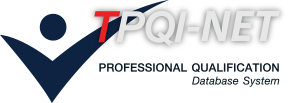หน่วยสมรรถนะ
Perform advanced troubleshooting in aircraft avionic maintenance.
สาขาวิชาชีพการบิน
รายละเอียดหน่วยสมรรถนะ
| 1. รหัสหน่วยสมรรถนะ | AVT-FTN-5-084ZA |
| 2. ชื่อหน่วยสมรรถนะ | Perform advanced troubleshooting in aircraft avionic maintenance. |
| 3. ทบทวนครั้งที่ | - / - |
| 4. สร้างใหม่ |
|
ปรับปรุง |
|
| 5. สำหรับชื่ออาชีพและรหัสอาชีพ (Occupational Classification) | |
|
|
|
| 6. คำอธิบายหน่วยสมรรถนะ (Description of Unit of Competency) | |
| This unit of competency requires application of hand skills and the use of fundamental system/component knowledge and applicable maintenance publications and test equipment to troubleshoot faults in avionic systems of fixed and rotary wing aircraft that are beyond the bounds of maintenance manual fault diagnosis guides during scheduled or unscheduled maintenance. Work may be completed individually or as part of a team. | |
| 7. สำหรับระดับคุณวุฒิ |
| 1 | 2 | 3 | 4 | 5 | 6 | 7 | 8 |
|---|---|---|---|---|---|---|---|
| 8. กลุ่มอาชีพ (Sector) | |
| 7232 Aircraft Mechanics | |
| 9. ชื่ออาชีพและรหัสอาชีพอื่นที่หน่วยสมรรถนะนี้สามารถใช้ได้ (ถ้ามี) | |
| N/A | |
| 10. ข้อกำหนดหรือกฎระเบียบที่เกี่ยวข้อง (Licensing or Regulation Related) (ถ้ามี) | |
| N/A | |
| 11. สมรรถนะย่อยและเกณฑ์การปฏิบัติงาน (Elements and Performance Criteria) |
| หน่วยสมรรถนะย่อย (EOC) | เกณฑ์ในการปฏิบัติงาน (Performance Criteria) | รหัส PC (ตามเล่มมาตรฐาน) |
รหัส PC (จากระบบ) |
|---|---|---|---|
| 103502.01 Verify /Isolate the defect. | 103502.01.01 Able to use available information from flight crew andmaintenance documentation to assist in fault determination and able to carryout inspection of the affected system to check both physical integrity andcorrect operation, take the effects on a system from interfaces/integrationwith other systems into account | 103502.01.01 | 71304 |
| 103502.01 Verify /Isolate the defect. | 103502.01.02 Able to use logicalprocesses, obtain specialist advice, to augment maintenance manual faultdiagnosis guides to ensure efficient and accurate troubleshooting and able tolocate faults and clearly identify and correctly record the causes of thedefects in maintenance documentation, including any other systems disturbed,where required. | 103502.01.02 | 71305 |
| 103502.02 Determine/Verify defect rectification. | 103502.02.01 Able to determine defect rectification requirements andthe necessary repair action initiated once verification and isolation of thedefect are confirmed and able to rectify defect in accordance with approvedmaintenance data | 103502.02.01 | 71306 |
| 103502.02 Determine/Verify defect rectification. | 103502.02.02 Able to restore allsystems disturbed or accessed during troubleshooting as applicable usingmaintenance manuals, repair schemes or approved maintenance data and Performall checks required by approved maintenance data to ensure correct operationof all disturbed systems. | 103502.02.02 | 71307 |
| 12. ความรู้และทักษะก่อนหน้าที่จำเป็น (Pre-requisite Skill & Knowledge) | |
| N/A | |
| 13. ทักษะและความรู้ที่ต้องการ (Required Skills and Knowledge) | |
|
(ก) ความต้องการด้านทักษะ
(ข) ความต้องการด้านความรู้
|
|
| 14. หลักฐานที่ต้องการ (Evidence Guide) | |
|
• condition monitoring and trend analysis techniques |
|
| 15. ขอบเขต (Range Statement) | |
|
• Industry standard procedures specified by manufacturers, regulatory authorities or the enterprise |
|
| 16. หน่วยสมรรถนะร่วม (ถ้ามี) | |
| N/A | |
| 17. อุตสาหกรรมร่วม/กลุ่มอาชีพร่วม (ถ้ามี) | |
| N/A | |
| 18. รายละเอียดกระบวนการและวิธีการประเมิน (Assessment Description and Procedure) | |
|
|
|
